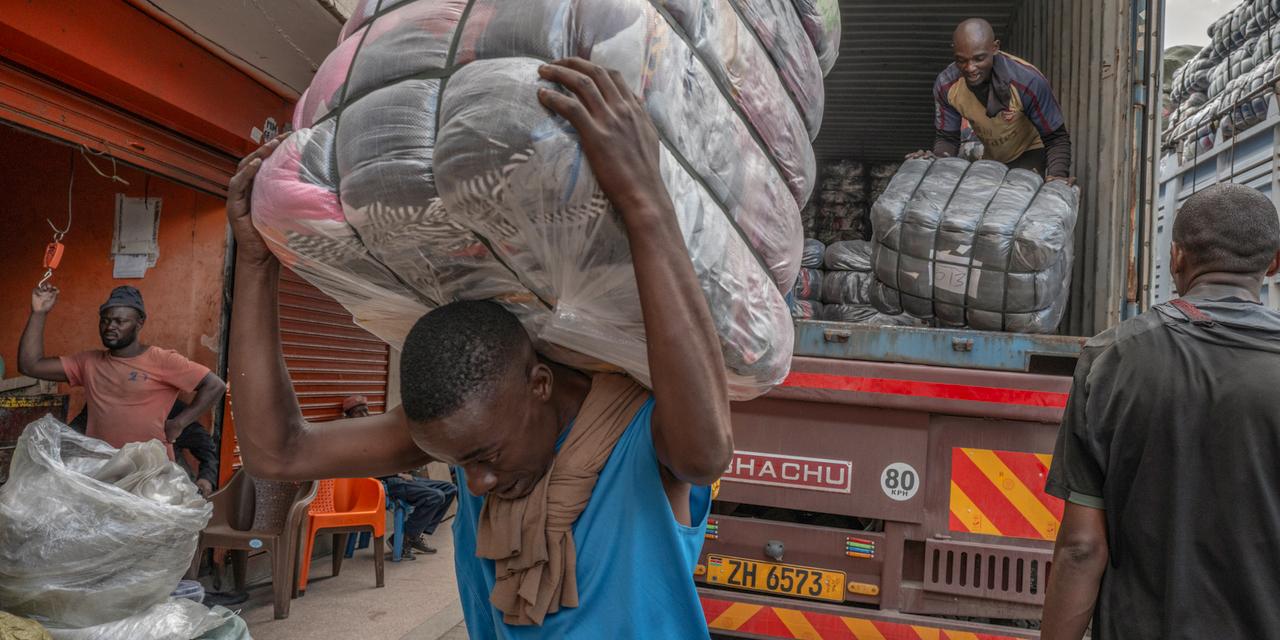


Kenya, a final destination for fast fashion, is overwhelmed by secondhand clothing
FeatureEvery year, thousands of tons of used textiles, arriving from Europe, the US and elsewhere, are unloaded at the port of Mombasa, 500 km from Nairobi. Numerous local initiatives have emerged to combat this form of pollution.
As dawn begins to color the horizon, the comings and goings of heavy trucks from the port of Mombasa are already nonstop at the gates of the Gikomba market in Nairobi. As soon as the trucks park, porters rush to unload them. They place huge bundles of secondhand clothing – mitumba in Swahili – each weighing several dozen kilos, on their heads, then disappear into the maze of tin roofs covering this 5-hectare labyrinth, where thousands of stalls stretch as far as the eye can see.
This market, a haven of resourcefulness and bargaining, was born in the mid-20th century, at a time when railway workers from a nearby neighborhood would come to buy household goods and used clothing from Asian shopkeepers. As the site grew, the government decided in 1952 to designate its boundaries and cover it.
Over the years, Gikomba has transformed into a temple of secondhand textiles, the largest in East Africa. Open from morning to night, it attracts both Kenyans looking for affordable clothing and tourists on the hunt for vintage finds. In this chaos – far more organized than it might appear – everything has its place: pants here, shoes and dresses there and lingerie further along.
Nearly 500 containers from around the world arrive in Kenya each month via the port of Mombasa. This gateway into East Africa provides access not only to this country of 55 million people, but also to its neighbors, including Uganda and Tanzania, thus orchestrating a unique business. The principle is simple: specialized companies buy huge batches from Western companies that collect used clothing donated to charities or discarded by consumers. It is then up to Kenyans to sort through the items, separating those of value – saleable or usable – from the worthless rest.
You have 82.23% of this article left to read. The rest is for subscribers only.
